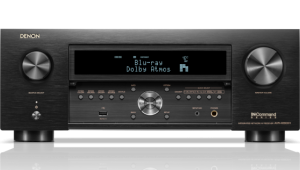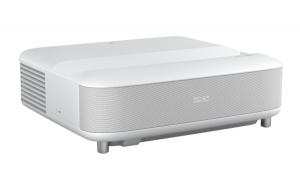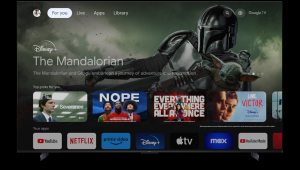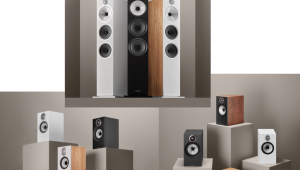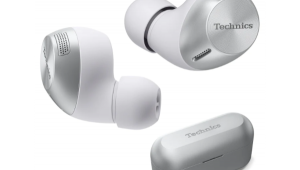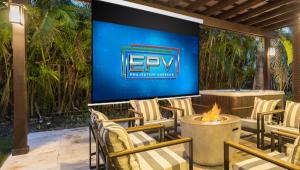Tech Trends 2013: Video Page 2
Smart TVs get smarter
The Smart TVs that Sound & Vision tested in 2012 came with everything from voice and gesture control to QWERTY remotes and Web-trolling video search engines. But in practice all of these features proved half-baked - more of a hassle than a help. In general, the only "Smart" features that could be relied on were movie/TV streaming apps like Netflix, Vudu, and Hulu, and those more often than not ended up buried in a cluttered, cumbersome interface.
Clearly, there was nowhere to go but up. And the new offerings at CES 2013 made it apparent that the Smart features on top-of-the line TVs, most of which now harbor a dual-core processor at minimum, were going to be an advancement over those found in last year's sets. It's hard to say just how much better they'll be until we get our hands on them, but preliminary signs indicate that things are looking good.
TV Guide
The most encouraging development is the radical changes to be seen in most manufacturers' Smart TV graphical user interfaces (GUIs). Screen interfaces now sport multiple panels and "personalization" capabilities to make them more useful and less cluttered. Panasonic's new My Home Screen, for example, lets multiple users create a personal "dashboard" containing favorite apps and windows with program guide info, weather, and news. The layout can be spread over multiple pages, and high-end models that provide a built-in camera like the company's VT60 series plasmas and WT60 series LCDs also have face recognition to automatically call up the right home screen when it spots your smiling mug.
Samsung's changes to its Smart Hub interface include a streamlined multipanel layout with tabs for apps, program info, pictures, and social media. The various screens can be "swiped" through in a tablet-like manner with the TV's remote control. As with Panasonic's TVs, a key improvement to Samsung's Hub for 2013 is the incorporation of program guide data from your TV service provider. Samsung's Smart TVs also have a new recommendation engine that tracks your past viewing and displays thumbnail images of upcoming programs it thinks you'll like in the Hub's On TV panel.
LG's updated Home Dashboard interface for its Smart TVs includes a similar feature called On Now that can scour both live listings and streaming sources for content it thinks you - or, more accurately, your data profile - will approve of. And another new Home Dashboard feature, My Interest Cards,provides a comprehensive way for you to spread apps, news feeds, and other data across multiple, scrollable screens.
His Master's Voice
Along with sleeker, smarter GUIs, select new TVs from Samsung, Panasonic, and LG provide voice and/or gesture control. Our experience with these features on last year's Samsung models involved plenty of yelling and swiping, only to have the TV ignore us. But this year we're told that the tech has been improved to the point where you might want to use those features in place of a standard-issue remote.
Samsung TVs with gesture control for 2013 come with higher-resolution built-in cams that should more accurately track motion. As for voice recognition, Samsung, LG, and Panasonic TVs with that feature now respond to more natural speech commands: "Switch to ESPN," for example, or "Search for a James Bond film starring Sean Connery and not that other guy whose name I forget."
It's way too soon for TV makers to abandon traditional remote controls, though new Smart models for 2013 will come with interesting ones. LG's third-gen Magic Remote features the same built-in mike for voice command and gyroscope for point-and-click menu navigation found in previous versions, but the new one also incorporates gesture control, a feature that lets you do things like write a number in the air and have the TV tune to that channel. Useful? Maybe. Cool? Sure. Remotes that will come with select sets from Samsung and Panasonic also provide voice control as well as touchpads to make Web browsing and menu navigation more user-friendly.
Second Screens
Hardware remote controls might still be a necessity, but other new developments are helping to chip away at their primacy. Plenty of TV makers provide apps that let you control their sets with a smartphone or tablet. But it appears that more than just remote control functions are migrating over to the "second screen."
One example of this trend is Sony's SideView app, which runs on your iPad or other tablet and provides a full EPG with your TV provider's offerings. You can select programs to watch or record via the EPG grid, and the corresponding IR commands get sent out to your DVR to make things happen. SideView also lets you dig deeper into listings by displaying related program info (synopsis, cast, etc.), and it also has a social media component - something that seems to be migrating away from the TV and onto second screens. (Does anyone view Twitter or Facebook feeds on their TV? The numbers apparently indicate no.)
Content Throwing
Another new development to look for in this year's crop of Smart TVs is content throwing, a.k.a. wireless network sharing. This subset of wireless tech, which includes MiraCast and NFC tagging, allows for instantaneous content transfer, be it a video, photo, or Web page, from a smartphone or tablet to the TV. Miracast, which is supported by new TVs from LG and Philips and smartphones from LG and Samsung, uses Wi-Fi Direct to make wireless content transfers. At present, it's Android-only. (Don't fret, Apple users. You can always use AirPlay to send audio/video/photos from an iOS device or computer to an Apple TV receiver.)
NFC (near field communication) tagging involves making "contact" between an NFC-enabled smartphone and a compatible TV. Like Bluetooth, NFC is only meant to convey data over short distances. Unlike Bluetooth, NFC doesn't involve a device pairing process or other setup steps. NFC-enabled TVs were shown at CES by Sony and LG. Panasonic, meanwhile, launched version 2.0 of Swipe&Share, an iOS/Android app that lets you easily and wirelessly transfer videos and photos to and from one of the company's Smart TVs.
Premium Streaming
Generations of viewers have become used to having a set-top box connected to their TV, but Smart interfaces on new sets are finally starting to provide a hardware-free method to stream premium content. In 2012, Samsung added the Verizon FiOS app to its Smart TV platform, along with HBO GO, an app that lets HBO subscribers stream programs to a TV or tablet. In 2013, LG will join the list of TV makers to incorporate the Verizon app. If you're a DirecTV subscriber, another way to get premium content to a TV sans receiver is via RVU, a protocol that enables both program-guide data and video to be streamed directly from the company's Genie DVR over an Ethernet connection. (See our review of the Genie on page 056.) You can even use your TV's own remote rather than a separate one from DirecTV. RVU-enabled TVs were only available from Samsung in 2012, but for 2013 Sony also plans to include the feature in its midrange KDL-R550A and KDL-R520A models.
Do you need a Smart TV? Even if the answer to that question is no, there's a good chance that any new set you buy will be packed with at least some "Smart" features. The good news is that those features are getting more sophisticated, and they're being accompanied by a range of options that make it easier to transfer content to and from the widening galaxy of portable devices. Even if you've avoided the new world of Smart TV thus far, its networked tendrils may grab you yet. -Al Griffin
- Log in or register to post comments








